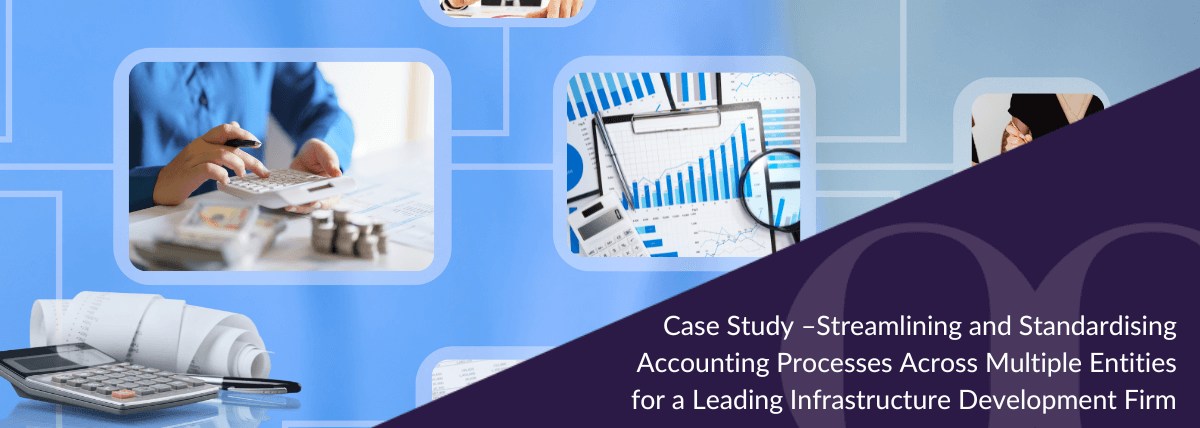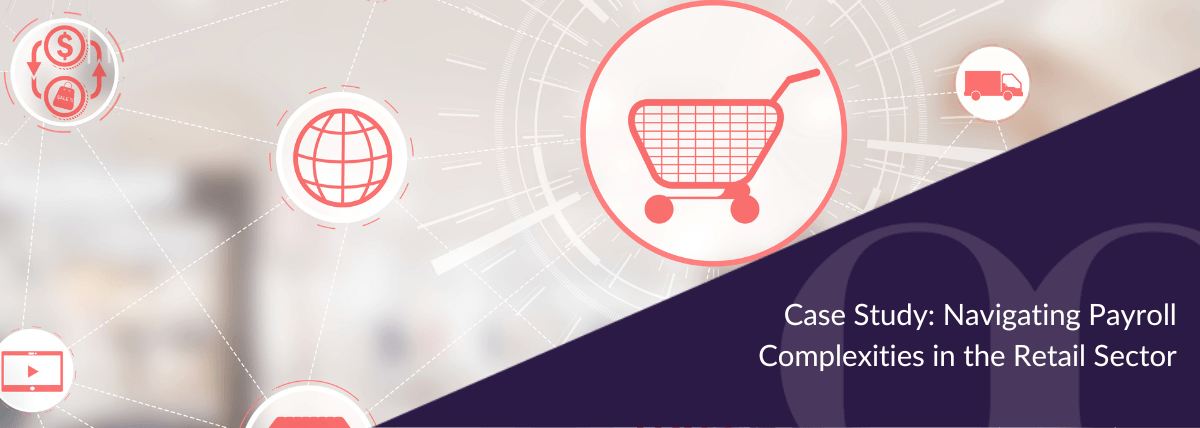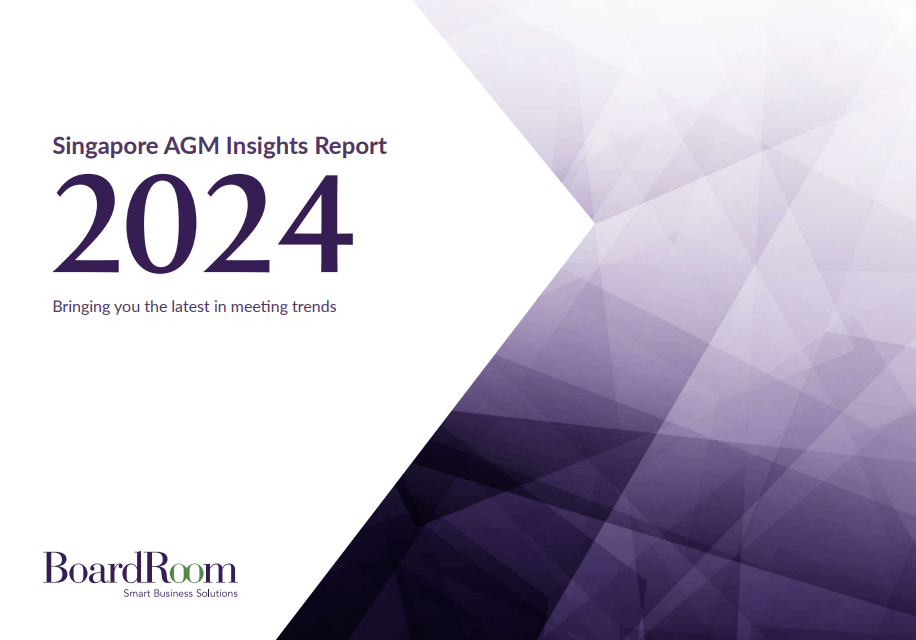Once limited to physical venues, AGM meetings have evolved alongside advancements in governance and technology. The shift began during the COVID-19 pandemic and has since been reinforced by regulatory updates from Accounting and Corporate Regulatory Authority (ACRA) and the Singapore Exchange (SGX), which now provide greater flexibility in how meetings are conducted.
Today, hybrid AGMs, combining in-person and virtual participation, are becoming increasingly common, promoting accessibility, transparency, and broader shareholder engagement.
Nonetheless, physical AGMs continue to hold significance, especially for shareholders who prefer direct, in-person interaction. Charlyne Pak, Manager, Share Registry Services, BoardRoom Singapore, notes that hybrid formats support broader engagement without the loss of human touch. This guide provides advice for board members navigating hybrid AGM meetings to ensure compliance and shareholder accessibility.
What is a Hybrid AGM Meeting?
An AGM meeting (Annual General Meeting) is a vital event where shareholders review company performance, vote on key matters and engage with the board. Among the various types of shareholders’ meetings, AGMs are legally required and central to corporate transparency.
A hybrid AGM integrates in-person and virtual participation, allowing shareholders to attend, vote and ask questions from any location. This format supports greater inclusivity and flexibility, especially for overseas shareholders, individuals with accessibility needs, or shareholders with scheduling conflicts.
“Hybrid AGM allows more shareholders to participate meaningfully, regardless of their location,” says Charlyne. “It promotes inclusivity without compromising governance”.
Key features of a hybrid digital meeting include secure online voting, live Q&A, and access to documents and presentations. Proxy appointments can be made via physical forms and/or electronically, with systems in place to verify identity and ensure voting integrity.
While digital engagement is rising, physical AGMs remain important, as many shareholders still value in-person interaction. The hybrid digital meeting format offers the best of both worlds, making it a strategic choice for boards aiming to balance accessibility, compliance and shareholder trust built on transparency and inclusive participation.

Navigating Compliance and Regulatory Considerations
As hybrid AGM meetings become more prevalent, it is crucial to ensure that meeting formats adhere strictly to regulatory requirements. The legal framework for AGM meetings is set out in the Companies Act for private limited and non-listed public companies and Listing Rules for listed entities. These rules provide clear mandates for maintaining corporate transparency and safeguarding shareholder rights, regardless of whether a meeting is conducted in person or in a hybrid format.
Singapore’s Regulatory Landscape for AGM Meetings
Companies are required to provide shareholders with clear and timely AGM notices, detailing the meeting date, time, agenda, venue, and procedures for both physical and virtual participation. Instructions must also cover real-time electronic voting, how to access meeting documents, and how to submit questions in advance or during the meeting. These notices must be distributed within statutory timelines, made easily accessible, often via company websites or digital platforms.
For listed companies, the SGX Listing Rules and Practice Note 7.5 provide further guidance, emphasising fairness, transparency, and inclusivity. Shareholders should be given at least seven days after the meeting notice is published to submit written questions, and issuers are encouraged to respond promptly, ideally before proxy forms are lodged. Crucially, hybrid meeting arrangements must not disadvantage virtual attendees: they must be able to vote, raise questions, and receive real-time responses with the same ease as those attending in person.
“Advance submission of questions is especially helpful for those who are less comfortable speaking in public,” says Charlyne. “It enhances board accessibility and builds trust by ensuring everyone has a chance to be heard”.
Best Practices for Governance-Compliant Hybrid Digital Meetings
To support full compliance and uphold good governance, BoardRoom recommends the following best practices:
- Clearly outline how to access the physical venue and online platform.
- Provide detailed instructions for proxy submission, voting procedures and accessing documents.
- Ensure virtual and physical attendees can vote with equal rights and convenience.
- Use secure, auditable e-voting systems that support real-time voting.
- Deploy secure platforms with proven uptime and data protection standards.
- Include redundancy systems and real-time tech support to manage unexpected disruptions.
- Allow shareholders to submit questions live.
- Provide equal Q&A time for virtual participants, and moderate responses transparently.
- Provide options for both physical and electronic proxy submissions.
- Communicate proxy deadlines clearly and accurately.
“Companies must ensure that hybrid arrangements do not create inequalities in participation,” explains Charlyne. “Shareholders attending virtually must enjoy the same rights as those present physically. This includes voting, asking questions and receiving real-time responses from the board”.
Shareholder Engagement and Hybrid AGMs
Shareholder engagement is a cornerstone of effective corporate governance. Hybrid AGMs have become a tool to enhance this engagement. When done well, hybrid AGMs remove traditional access barriers and foster a more inclusive, transparent dialogue with shareholders.
Enhancing Participation with Digital Tools
Hybrid AGMs use integrated technologies that ensure both virtual and physical attendees can participate equally. These include:
- Secure electronic voting systems that are auditable, easy to use and enable real-time vote casting.
- Live Q&A sessions that allow shareholders to pose questions during the meeting, whether present physically or virtually.
- Live polling features that capture sentiment in real time accurately, reinforcing the value of shareholder input during key decisions.
Managing Concerns: Security, Privacy and Integrity
With the growing use of digital tools, boards must also address concerns around data security, fraud prevention and system reliability. A hybrid AGM introduces new potential risks, such as unauthorised access, data leaks or system failures. If not managed properly, these risks can undermine trust and regulatory compliance.
Digital security best practices include:
- user authentication protocols to verify shareholder and proxyholder identities before granting access to meeting platforms;
- end-to-end encryption of voting and participation data;
- redundant systems and real-time tech support, ensuring continuity even in the event of a technical issue.
“We work closely with our technology partners to deliver fully tested, secure platforms,” says Charlyne. “Our systems are designed to support the end-to-end meeting process, from pre-meeting communication to post-meeting reports, safely and seamlessly”.

Risk Management and Future Proofing AGMs
Running a hybrid AGM meeting means managing two formats concurrently, increasing the complexity around system reliability, data privacy and operational continuity. It is incumbent on boards to proactively address risks tied to technology, compliance and stakeholder trust.
“Hybrid AGMs require meticulous planning,” says Charlyne. “Platform security, user authentication and contingencies must all be in place to mitigate disruptions and reinforce trust”.
Ultimately, the conversation about hybrid AGMs is not about replacing physical meetings but enhancing them. Each format serves unique needs, and by integrating both, organisations can strengthen governance, expand access, and manage risk more effectively.
BoardRoom’s digital solutions support features like e-proxies, real-time online voting and self-registration tools, all backed by secure, PDPA-compliant platforms with end-to-end encryption. Real-time tech support and rigorous dry runs ensure resilience against system failures and cyber threats. Beyond compliance, BoardRoom offers a suite of integrated services managing everything from meeting documents distribution, proxy validation, user authentication, registration, voting to provision of post-meeting reports.
Charlyne adds that conducting full-scale dry runs to test the voting systems is key, as well as ensuring stakeholders are familiar with the platform. “It’s about making sure the experience is seamless and inclusive for every participant, regardless of format”, adds Charlyne.
Partnering with BoardRoom for Hybrid AGMs
Hybrid AGMs represent more than a technological upgrade – they can be a strategic step forward. As companies adapt to evolving expectations, hybrid AGMs allow boards to remain accessible, transparent and inclusive, without sacrificing the integrity of the AGM meeting.
BoardRoom’s hybrid AGM solutions are built to scale, fully compliant with Singapore’s legal framework and supported by trusted technology partners.
“At BoardRoom, we offer more than just technology — we deliver complete meeting experiences,” says Charlyne. “We support our clients through the entire lifecycle, from regulatory compliance, proxy handling to real-time voting and post-meeting reporting, ensuring every aspect of the meeting is seamless and secure”.
Get in touch today to learn how we can help you deliver a compliant, engaging and future-ready AGM.
Contact BoardRoom for more information:
Charlyne Pak
Manager, Share Registry Services, BoardRoom Singapore
Related Business Insights
-

29 Sep 2025
How Smarter HR & Payroll Drive Business Growth
HR is no longer just the department that processes payslips and tracks annual leave. Today, it is a strategic drive …
READ MORE -

25 Sep 2025
How Company Tax Filing and Pre-Planning Can Be a Strategic Advantage
Discover how to move company tax filing from a compliance box-tick to a strategic advantage that reduces risk and u …
READ MORE -

24 Sep 2025
How can your business benefit from the Johor-Singapore Special Economic Zone?
Act now to benefit from the Johor-Singapore Special Economic Zone, designed to simplify cross-border trade and attr …
READ MORE


























